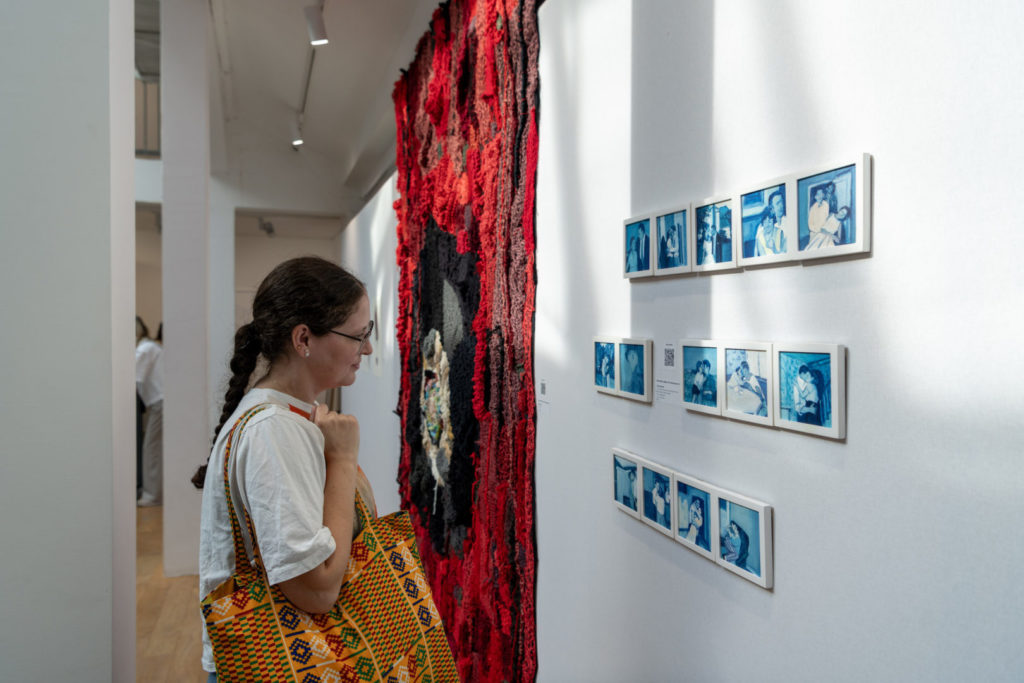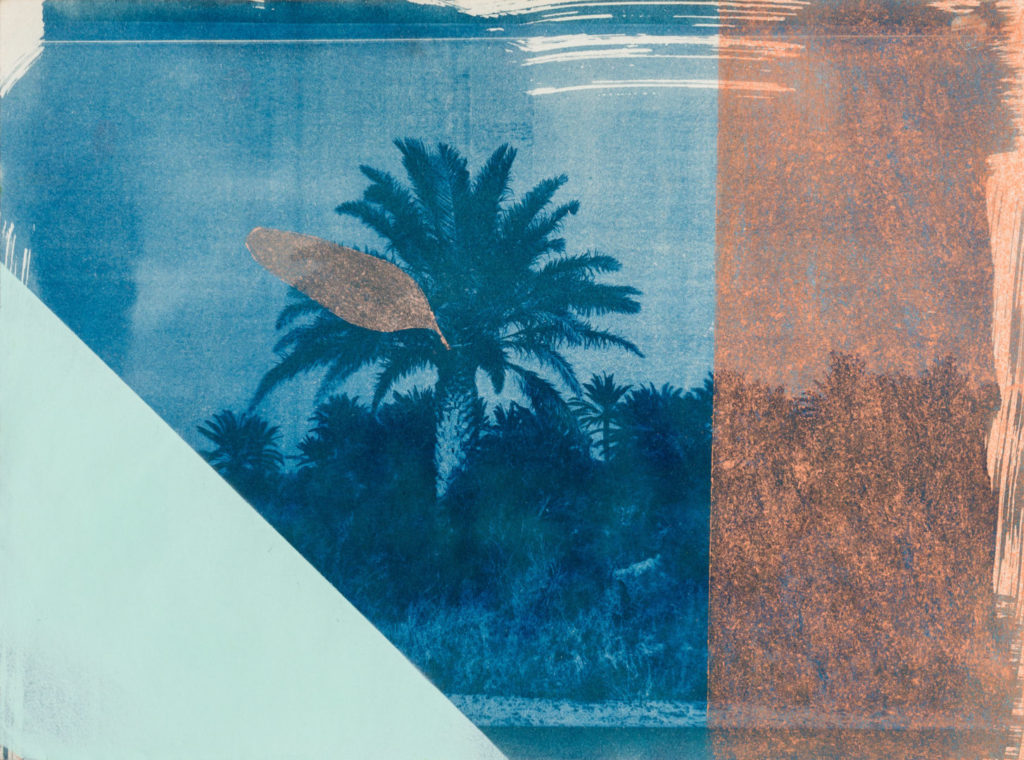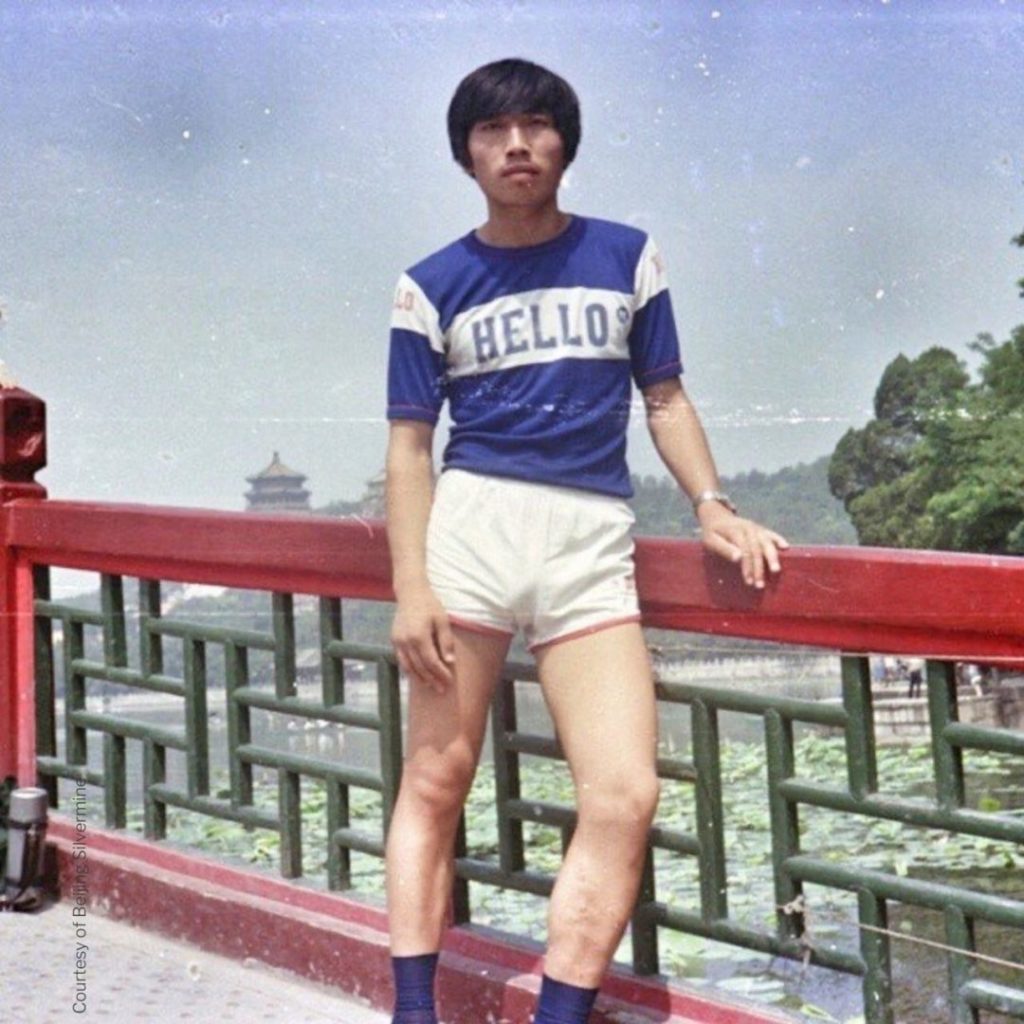Resonating with the ruins of the Abbey of Jumièges, this group exhibition brings together eleven Tunisian contemporary artists from the contemporary Tunisian scene who explore the image in all its forms, around the themes of history and memory.
The title of the exhibition is a proverb in Tunisian (Tunisian dialect) whose French equivalent would be “Drop by drop, water eventually wears away the stone.” It refers to the sum of small events which, perpetuated over time, can create considerable effects.
Although the works on display cover various places and periods, from Carthage to colonization, from the 2011 revolution to contemporary migration, this exhibition does not aim to be exhaustive or to provide a detailed portrait of the Tunisian photographic scene. Rather, it proposes a dialogue between artists from different generations exploring a forgotten past through archives, traces, rituals, vestiges and abandoned places.
The ink of an image printed on newsprint marking the hands that crumple it, objects washed up on the shore of Zarzis after the crossing of illegal migrants, inherited costumes bearing witness to ancestral rituals, silhouettes of ancestors almost erased on glass plates with gelatin-bromide found in an attic… By exploring ordinary lives and micro-histories, the artists reveal what Michel Foucault called “the other side of history”: everything that escapes the official narratives centered on major events and dominant figures.
In this dialogue with the past, artists do not merely illustrate, they manipulate and transform the image. Cyanotypes, gelatin-bromide glass plates, 16 mm films or digital images are hybridized with other media (performance, installation, sculpture, video, drawing) or craft techniques (embroidery, mosaic, reverse glass painting). Crumpling, layering, stitching or projecting the image becomes a way of exploring its link to matter and revealing its multiple sensory dimensions.

Beyond the medium, these approaches also aim to deconstruct inherited imaginations. They challenge stereotypes related to colonization, the human impact on nature, patriarchal domination and the exclusion of minorities. They restore a place for feminine traditions, for migrants and for political and social struggles, while questioning the transformations of the image in the digital age. While photography oscillates between a tool of emancipation and an instrument of domination, the artists gathered here divert its use: they reappropriate ancient processes, break with reproducibility or even free themselves from the photographic apparatus. They question the belief in the truth of images and their instrumentalization, at a time when they are omnipresent and often manipulated.
By questioning the representations that shape the collective memory, these artists deconstruct the photographic to arouse doubt and reveal multiple and changing realities. Their quasi-archaeological approach shows that nothing is fixed, but in constant transformation. Like Carthage according to Édouard Glissant, where identities were built through miscegenation – or rather “creolization” – they counter the fragmentation of the world with the richness of interactions between forms and cultures, affirming a fluid and shifting identity.
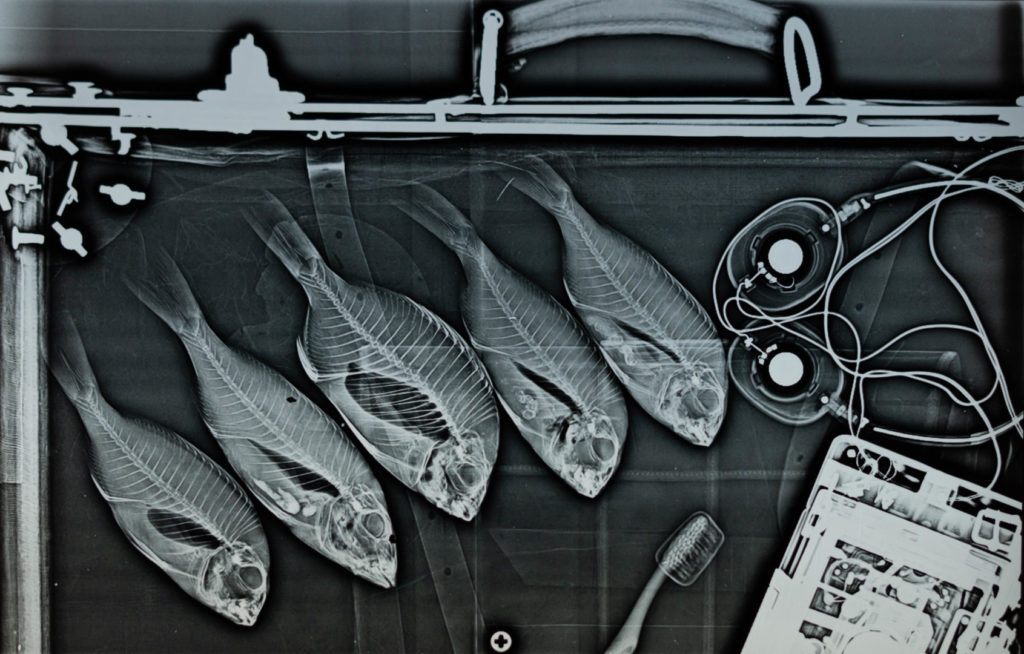


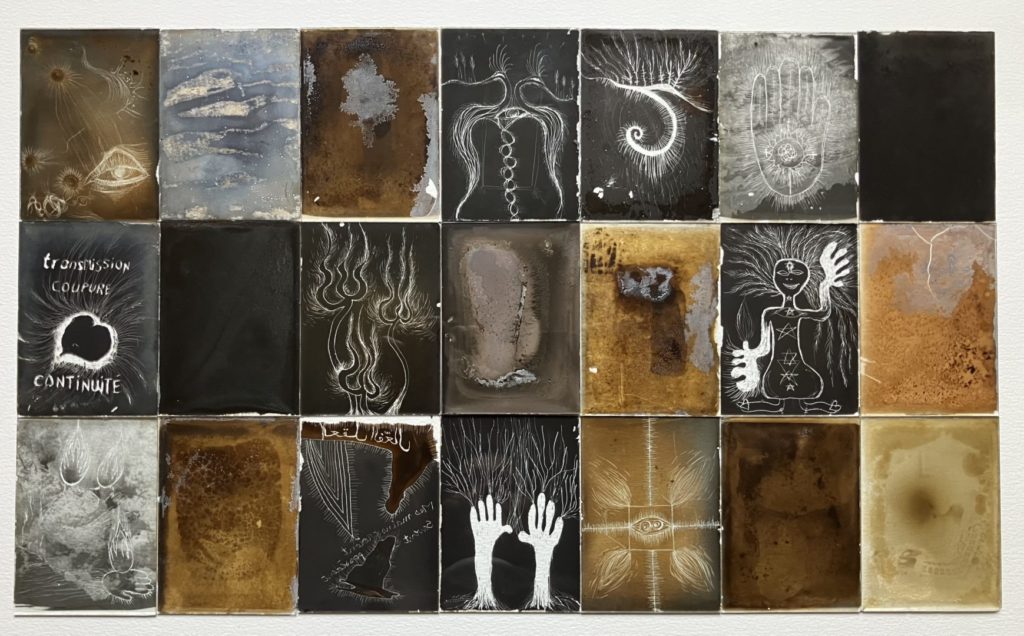
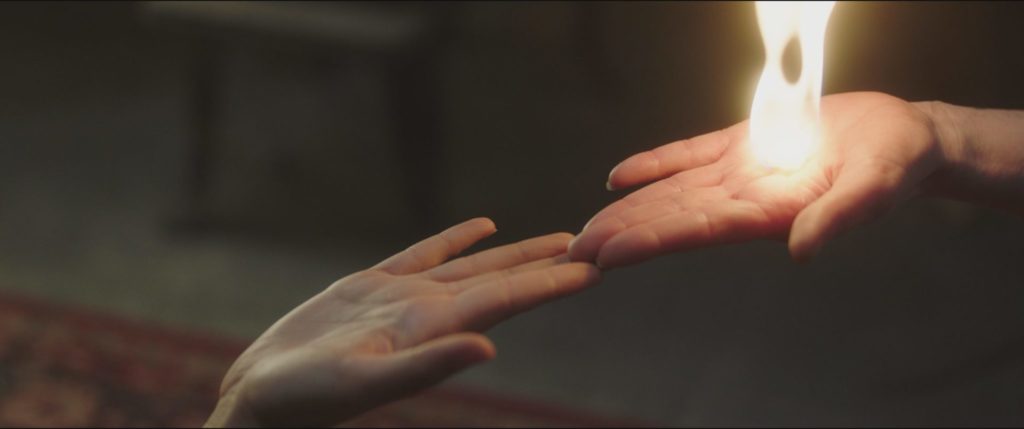





Events
Performance
Wled el Machta | Children of the Machta
Resonating with her works featured in this exhibition, which explore the symbolism and gestures of the machta (the woman who prepares the bride for the traditional nuptial rite in the Sahel region), visual artist Amira Lamti and dancer/choreographer Rochdi Belgasmi have conceived a performance combining dance and poetry. The performance examines gender roles and the transmission of a collective imagination in popular Tunisian dance. In partnership with the Terres de Paroles literary festival (Normandy), the French Institute of Tunisia and La Villette (Paris).
Friday, May 16 and Saturday, May 17 | 8:00-8:30 p.m.
Free with reservation | Terres de Paroles festival ticket office
Jumièges Abbey | Outside
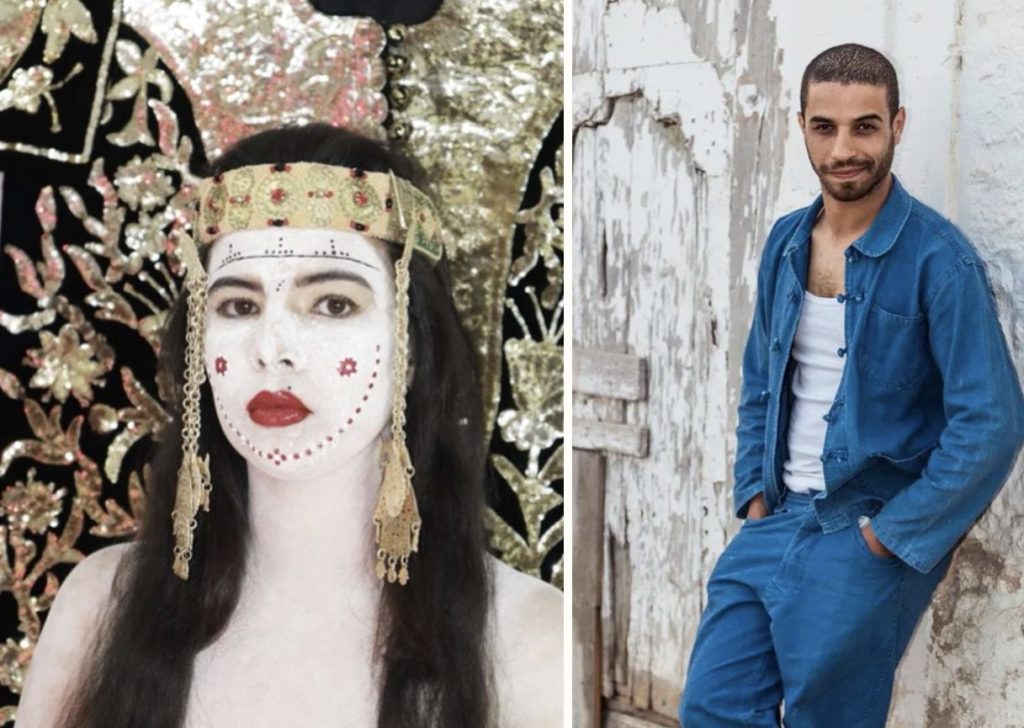
Exhibition Catalogue Launch Party
at the Book Bar of the Grand Amour Hotel (Paris)
Exhibition catalogue launch party, co-organized by curator Victoria Jonathan and publisher Moez Akkari: book signing and round table in the presence of several of the artists featured in the exhibition, menu by chef Elyes Lariani, and DJ set.
Catalogue: Bilingual French English to be published in May 2025. In collaboration with Bao Books, publisher and Tunisian editorial design studio.
Wednesday, May 21 | 6 p.m. to 2 a.m.
Free admission with reservation
Dinner with reservation | 01 44 16 03 30
Book Bar of the Grand Amour hotel | 18 rue de la Fidélité 75010 PARIS
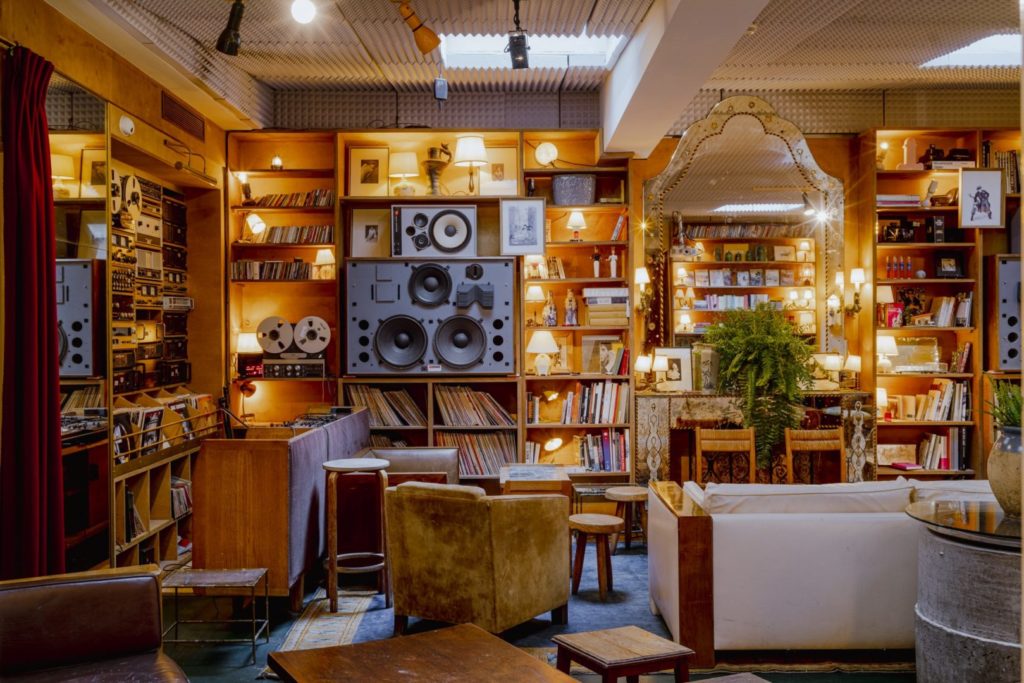
Focus on the modern and contemporary art fair Menart (Paris)
Since 2021, Menart Fair has aimed to highlight artists from the Levant, the Persian Gulf and North Africa through a selection of leading galleries.
For its 6th edition, Menart Fair will join the satellite fairs of Art Basel Paris. In its Project Room, the fair will honor the Tunisian art scene with a selection of works by the artists of the exhibition Slow and steady wears the stone (curated by Victoria Jonathan) at the Abbey of Jumièges.
October 25-27, 2025 (VIP on October 24)
Admission Fee Required (ticket combined with the AKAA fair)
More information
Menart Fair | 116 rue Turenne 75003 PARIS
